How Do I Shut Off the Af and Ae on My Kodak Easy Share Z980
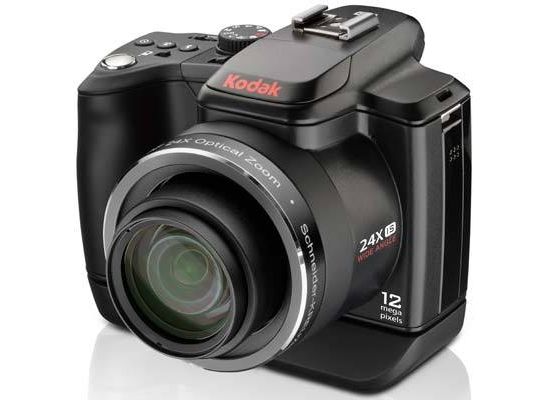
Introduction
The Kodak EasyShare Z980 is a new super-zoom digital camera, sporting a 24x optical zoom that provides an incredible focal range of 26-624mm! This covers every imaginable subject, from wide-angle landscapes to close-up action and nature shots, with the built-in optical Image Stabilizer thankfully on hand to help keep your pictures sharp. The 12 megapixel Kodak Z980 also offers a feature that will instantly catch the attention of every serious photographer out there - namely RAW format support - plus a 3 inch LCD screen, hotshoe for an external flash, 1280x720 pixel HD movie mode, macro mode of 1cm, full range of creative exposure modes (P/A/S/M), and Smart Capture mode for beginners. Available in black, the Kodak EasyShare Z980 has a launch price of $399 / £379.
Ease of Use
The Kodak EasyShare Z980 is bigger and heavier than all of the other super-zoom cameras currently on the market, measuring 90.5 × 123.7 ×105 mm and weighing 415g without batteries, with the massive lens barrel dominating the overall design. In hand, the Z980 feels quite good, with a deep rubberised grip that provides a secure hold and good resting place for your fingers. The shutter release is in a natural location for your index finger, with the rear zoom buttons falling under your right thumb. Despite the plastic body, everything feels fairly well built, although it doesn't match the build quality of the Olympus SP-590UZ or the Nikon P90. The Z980 comes with a very brief quick start guide in 10 different languages - there's not even a full PDF manual on the product CD. Not much use at all if you're taking pictures and need to find out what a particular option does. You'll have to download the Extended user guide from Kodak's website (presuming you have internet access).
The Kodak EasyShare Z980 is powered by four rechargeable AA-sized batteries (supplied in the box along with a recharger). The battery compartment door is located on the bottom plate and has an awkward plastic lock which often resisted being moved into place. The SD / SDHC memory card slot is also located here, so you need to be careful not to spill the 4 batteries all over the floor when changing cards. In an emergency, you can save about 6 Fine JPEG images in the Z980's 64MBs of internal memory. Next to it is the tripod socket, which is unfortunately made of plastic and not aligned with the lens' optical axis. You can attach the supplied plastic vertical grip via the tripod mount, to make it easier to take pictures in the vertical, portrait orientation. It does make the second shutter-release button (see below) easier to use, but also makes an already large camera even bigger. The vertical grip's own tripod socket is usefully inline with the lens' optical axis though.
There are no controls on the left side of the camera body (looking from the rear). On the right side of the body is a rubberized plastic flap protecting the DC In and USB/AV Out ports. Despite the Z980 being able to record HD video footage, there's disappointingly no HDMI socket for connecting the camera to a HD TV. In addition, at the base of the hand-grip is what at first glance looks like a second shutter-release button - and this is actually what it turns out to be. The Kodak EasyShare Z980 is the first ever camera that we've reviewed with two built-in shutter buttons, the top one for use when the camera is horizontally aligned in landscape mode, and the second when you turn it on its side to use in portrait mode. Unfortunately, that's about as clever as the system gets, because the camera can't actually auto-detect which orientation is currently being used. Incredibly, you actually have to move the switch located next to the top shutter button to manually toggle between the two shutter buttons! Even worse, the LCD display remains in landscape mode, even if you're shooting or playing back images in portrait mode, making it difficult to change the camera's settings. It's almost as if Kodak got half-way through this feature's implementation and then just gave up, despite the fact that many rival models can seamlessly switch between landscape and portrait orientations.
The rear of the camera is dominated by the large 3.0 inch monitor, which despite being described by Kodak as "high-resolution" actually has a relatively low resolution of 201K, dots, resulting in a rather grainy display. Directly above it is the electronic viewfinder and a button that toggles between the LCD and EVF. There's no dioptre adjustment available and after a short period of use the EVF actually made my eyes hurt - I soon gave up and exclusively used the main LCD screen. Vertically aligned along the right-hand edge of the LCD screen are four buttons - Delete, Menu, info and Playback. To the far right of the LCD is the ubiquitous navigation pad with four arrow buttons and an OK button in the middle. Unlike most digital cameras, there are no functions mapped to the arrow buttons - instead they are used to navigate through the menu system and playback of images. Directly above the navigation pad is the small orange Share button, which you can use to set pictures as Favourites and / or tag them for upload to your preferred online service.
The Kodak EasyShare Z980's 24x optical zoom lens spans 26mm up to an incredible 624mm. It's not quite as far-reaching as the 26x zoom of the current world leader, the Olympus SP-590 UZ, but is more than enough for almost every subjects that you'll ever encounter. The lens' maximum aperture is a fast f/2.8 at wide angle and a respectable f/5.0 at telephoto. As mentioned previously, the lens is operated via the rather spongy zoom buttons on the rear of the camera. The supplied lens-cap which clips into the front of the lens barrel is annoyingly ineffective, simply falling off the camera whenever I stored it in a pocket or camera-bag.
Taking hand-held photos with any super-zoom camera, especially in the longer half of the zoom range, carries the risk of your photos being ruined by camera shake. This is where the Z980's optical image stabilizer comes to the rescue. The Z980 counteracts camera shake by automatically shifting the sensor in the opposite direction. Image stabilisation can only be activated via the Setup menu, and is turned on by default. When set to On, image stabilisation kicks in whenever you depress the shutter release halfway, giving a faint, continuous sound. The live view on the LCD or EVF shows the stabilisation effect - the image appears to be floating in an almost surreal way. With image stabilisation, you can use about two times longer exposure times to take blur-free hand held shots than without it. This also means that image stabilisation is no cure-all - you will still have to mind your posture and hold the camera properly if you want sharp results, especially at the telephoto end. Using the EVF instead of the LCD and pressing the eyepiece firmly against your head is also an advisable technique.
The Kodak EasyShare Z980 offers a comprehensive range of shooting modes, accessed by the DSLR-like Mode Dial on top of the camera. Smart Capture mode is Kodak's take on the automatic, do-it-all mode aimed at complete beginners. It automatically detects faces in the frame, analyzes the scene for other content and for lighting, and applies KODAK PERFECT TOUCH Technology to enhance the image. Moving slightly beyond Smart Capture, you can turn the mode dial to the SCN setting and choose from the 16 scene modes available. None of these require you to know anything about f-stops, shutter speeds, white balance or depth of field - all you have to do is tell the camera what type of scene you are planning to take a picture of by picking the appropriate scene mode.
The P, A, S and M modes are for those who already know the basics of photography - or are at least willing to learn them, giving you more control over how the picture is taken. The small Jog Dial, located to the right of the Mode Dial, is called into action when working in these modes. Five key settings are displayed along the bottom of the LCD and EVF - aperture, shutter speed, exposure compensation, flash compensation and ISO speed. Depending on the mode chosen, you can move between them by scrolling the Jog Dial left or right with your right fore-finger, then press it in to access a specific setting, and scroll again to change that setting's values. It works quite well in practice, giving quick access to the camera's key creative settings, although people with large hands will find the Jog Dial a little on the small side.
The Movie mode allows you to specify the resolution (1280x720 HQ, 640x480 HQ or 320x240) and the AF Control (Continuous or Single). The frame rate is set at 30fps for all three movie resolutions. Video is recorded in the QUICKTIME MPEG-4 format with stereo sound. You can record up to 29 minutes of 1280x720 HQ footage and 80 minutes in the 640x480 HQ and 320x240 modes. You can use the optical zoom during movie recording.
The Kodak EasyShare Z980 offers a variety of auto-focusing modes. You can toggle between Single and Continuous AF, turn Face Detection On or Off, set the AF Zone to Center or Multi, and choose from normal Auto Focus, Macro, Super Macro and Landscape. There's also the welcome option of Manual focusing. In the MF Focus mode you focus the lens manually using the left and the right arrow keys on the navigation pad. To aid you in achieving focus, the camera displays a horizontal distance scale and also magnifies the entire frame, but not by enough to make it easy to tell if the subject is in focus or not.
The Z980 starts-up in about three seconds - just don't forget to remove the lens cap, which will be knocked off by the lens zooming out slightly. Once powered up, the camera is reasonably responsive. It takes about 4 seconds to zoom from the widest to the longest focal length. The auto-focus system is quick in good light and the camera achieves focus most of the time indoors or in low-light situations, helped by the AF assist lamp. It takes about 1 second to store a JPEG image, allowing you to keep shooting as they are being recorded onto the memory card - there is a very brief LCD blackout between each image.
The Kodak EasyShare Z980 has two continuous drive modes, accessible via the Drive button on top of the camera (the self-timer options are also accessed via this button). Full-resolution shots can only be captured at a pedestrian 1fps for up to 6 frames, but the camera also offers a faster 5fps High Speed mode for up to 9 frames, albeit at 3.1 megapixel quality. This sounds more exciting, but the quality is not what you'd expect, even when you consider the reduced pixel count.
The Z980 is one of the few superzooms to offer a RAW capture mode, in addition to the standard JPEG format. This initially sounds promising and a real attraction if you want to edit your pictures in post-production without affecting the image quality. Unfortunately, there are a number of caveats which will ultimately put most people off. You can only record a RAW file or JPEG, not both at the same time, and the camera completely locks-up for about 5 seconds while the RAW file is processed. At the time of writing, there is no software that can actually edit the Z980's RAW files, not even the Kodak EasyShare 7.1 image editing application that ships with the camera. You're limited to a few quick fixes, such as changing the noise suppression, sharpness, exposure, shadows and highlights and white balance, and then saving the RAW file into another format (BMP or JPEG). You can also "develop" the RAW files in-camera and save them as a JPEG copy, but it offers even less settings than Kodak EasyShare 7.1 and it kind of defeats the main purpose of shooting in RAW and editing later on a bigger screen. Third-party vendors like Adobe may add support to Photoshop, Lightroom et al in the future, but at the moment editing the Z980's RAW files is a frustrating experience.
When it comes to flash photography, the Kodak EasyShare Z980 has a good range of options. It has a pop-up flash which offers a wide range of shooting modes, and flash exposure compensation is also provided in the PASM shooting modes. The flash pops-up automatically when a particular mode is selected. There's also a dedicated hotshoe on top of the camera for use with an external flashgun. The user guide states that the Kodak P20 Zoom Flash is compatible with the Z980's hotshoe, but it should accept other third-party flashguns.
Once you have captured a photo, the Z980 has a reasonable range of options when it comes to playing, reviewing and managing your images. You can instantly scroll through the images that you have taken, view thumbnails (up to 28 onscreen at the same time and in Favourites, Calendar and Tagged views), zoom in and out up to 8x magnification, view slideshows with music and effects, delete, protect, crop, tag, copy and add a sound clip to an image. You can also select favourite images, apply Kodak's Perfect touch Technology to instantly improve the image, and set various print, email and share options. The Info button toggles you to set the image as a favourite, edit tags, and view thumbnails. Annoyingly you have to go into the Playback menu to view detailed settings information about each picture, such as the ISO rating and aperture / shutter speed. There is a small brightness histogram available during both shooting and playback. In addition, for movies you can choose a single frame and print it, trim the beginning or end, set bookmarks within a movie for easy navigation, and make a 4-, 9-, or 16-up picture from a video clip.
Image Quality
All of the sample images in this Review were taken using the 12 megapixel Fine JPEG setting, which gives an average image size of around 6Mb.
The Kodak EasyShare Z980's image quality is below average. The Kodak EasyShare Z980's main drawback in terms of image quality is noise, which is evident at the base ISO speed of 64 in both JPEG and RAW files. The noise gets progressively worse as you go from ISO 100 to ISO 400 and then up to the virtually unusable ISO 800 and 1600 settings. Also problematic are the bright, over-saturated and frankly in-accurate colours (which some people may like), and the fairly obvious smearing of fine detail in all of our test photos.
The Kodak EasyShare Z980 dealt with chromatic aberrations pretty well, with purple fringing effects appearing only in high contrast situations. The 12 megapixel images were soft straight out of the camera, but you can change the in-camera sharpening level if you wish. The night photograph was fine, with the maximum shutter speed of 16 seconds allowing you to capture enough light for most situations.
The built-in flash worked well indoors, with no evidence of red-eye and good overall exposure. Macro performance is excellent, allowing you to focus as close as just 1cm away from the subject at the wide-angle lens setting. Anti-shake is an essential feature on a camera like this and one that works well when hand-holding the camera in low-light conditions or using the telephoto end of the zoom range. There was very obvious barrel distortion evident at the 26mm wide-angle lens setting.
Noise
There are 6 ISO settings available on the Kodak EasyShare Z980. Here are some 100% crops which show the noise levels for each ISO setting, with JPEG on the left and the RAW equivalent on the right:
| JPEG | RAW |
| ISO 64 (100% Crop) | ISO 64 (100% Crop) |
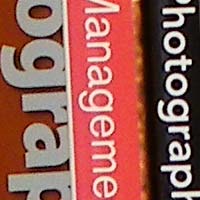 | 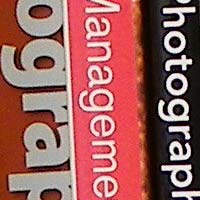 |
| ISO 100 (100% Crop) | ISO 100 (100% Crop) |
 | 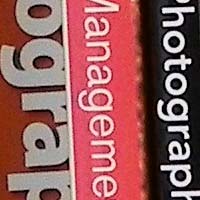 |
| ISO 200 (100% Crop) | ISO 200 (100% Crop) |
 | 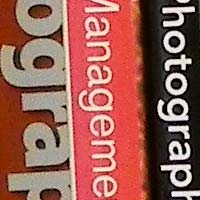 |
| ISO 400 (100% Crop) | ISO 400 (100% Crop) |
 | 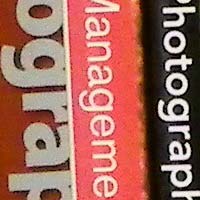 |
| ISO 800 (100% Crop) | ISO 800 (100% Crop) |
 | 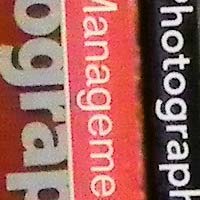 |
| ISO 1600 (100% Crop) | ISO 1600 (100% Crop) |
 | 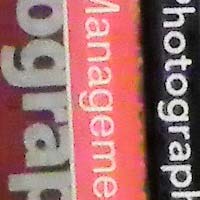 |
Focal Range
The Kodak EasyShare Z980's 24x zoom lens provides a focal length of 26-624mm in 35mm terms, as demonstrated below.
| 26mm | 624mm |
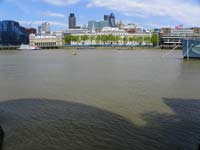 | 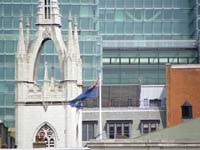 |
File Quality
The Kodak EasyShare Z980 has 3 different image quality settings available, with Fine being the highest quality option. There is also a RAW mode. Here are some 100% crops which show the quality of the various options, with the file size shown in brackets.
| 12M Fine (6.5Mb) (100% Crop) | 12M Standard (3.8Mb) (100% Crop) |
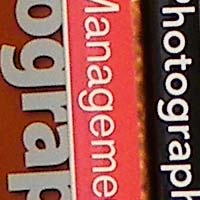 | 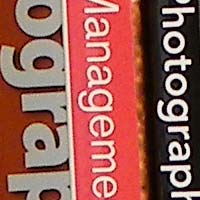 |
| 12M Basic (3.2Mb) (100% Crop) | 12M RAW (21.2Mb) (100% Crop) |
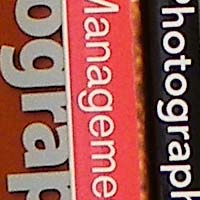 | 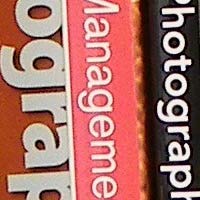 |
Sharpening
Here are two 100% crops which have been Saved as Web in Photoshop. The right-hand image has had some sharpening applied in Photoshop. The out-of-the camera images are soft at the default sharpening setting and benefit from some further sharpening in a program like Adobe Photoshop. You can also change the in-camera sharpening level to suit your tastes via the Sharpness option in the main menu.
| Original (100% Crop) | Sharpened (100% Crop) |
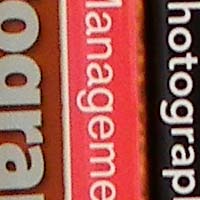 | 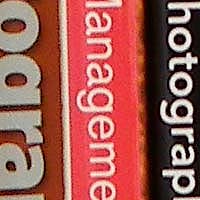 |
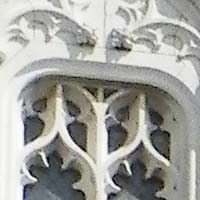 |  |
Chromatic Aberrations
The Kodak EasyShare Z980 handled chromatic aberrations well during the review, with some purple fringing present around the edges of objects in certain high-contrast situations, as shown in the examples below.
| Example 1 (100% Crop) |
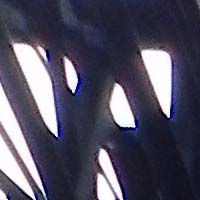 |
Macro
The Kodak EasyShare Z980 offers a Super Macro setting that allows you to focus on a subject that is 1cm away from the camera when the lens is set to wide-angle. The first image shows how close you can get to the subject (in this case a compact flash card). The second image is a 100% crop.
| Macro Shot | 100% Crop |
 | 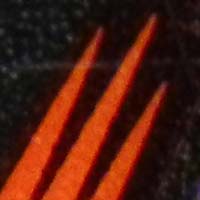 |
Flash
The flash settings on the Kodak EasyShare Z980 are auto, off, fill, and red-eye reduction. These shots of a white coloured wall were taken at a distance of 1.5m.
| Flash Off - Wide Angle (26mm) | Flash On - Wide Angle (26mm) |
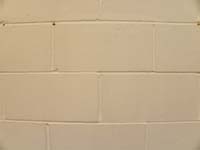 | 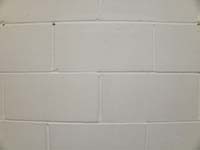 |
| Flash Off - Telephoto (624mm) | Flash On - Telephoto (624mm) |
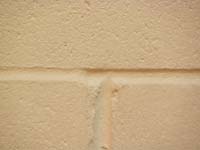 | 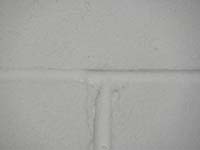 |
And here are some portrait shots. As you can see, neither the Flash On or the Red-eye Reduction settings caused any amount of red-eye.
| Flash On | Flash On (100% Crop) |
 | 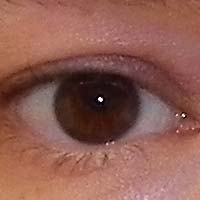 |
| Red-eye Reduction | Red-eye Reduction (100% Crop) |
 | 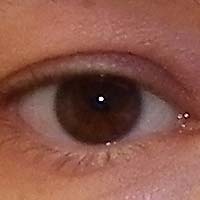 |
Night
The Kodak EasyShare Z980's maximum shutter speed is 16 seconds, which is good news if you're seriously interested in night photography. The shot below was taken using an aperture of f5.6 and shutter speed of 10 seconds at ISO 100. I've included a 100% crop of the image to show what the quality is like.
| Night Shot | Night Shot (100% Crop) |
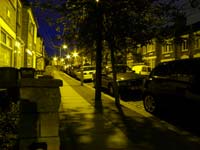 | 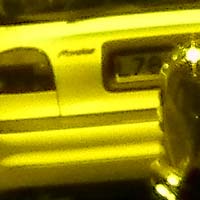 |
Image Stabilisation
The Kodak EasyShare Z980 has an Image Stabilisation mechanism, which allows you to take sharp photos at slower shutter speeds than other digital cameras. To test this, I took 2 handheld shots of the same subject with the same settings. The first shot was taken with the Image Stabiliser option turned off, the second with it turned on. Here is a 100% crop of the image to show the results. As you can see, with Image Stabilisation turned on, the images are sharper than when it's turned off. This feature really does seem to make a difference and could mean capturing a successful, sharp shot or missing the opportunity altogether.
| Shutter Speed / Focal Length | Image Stabilisation Off (100% Crop) | Image Stabilisation On (100% Crop) |
| 1/8th / 26mm | 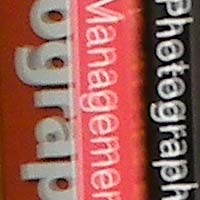 | 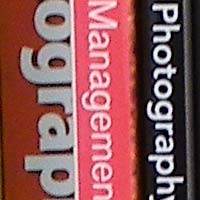 |
| 1/8th / 190mm | 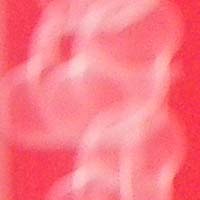 |  |
Sample Images
This is a selection of sample images from the Kodak EasyShare Z980 camera, which were all taken using the 12 megapixel Fine JPEG setting. The thumbnails below link to the full-sized versions, which have not been altered in any way.
Sample Movie & Video
This is a sample movie at the highest quality setting of 1280 x 720 pixels at 30 frames per second. Please note that this 11 second movie is 12.9Mb in size.
Product Images
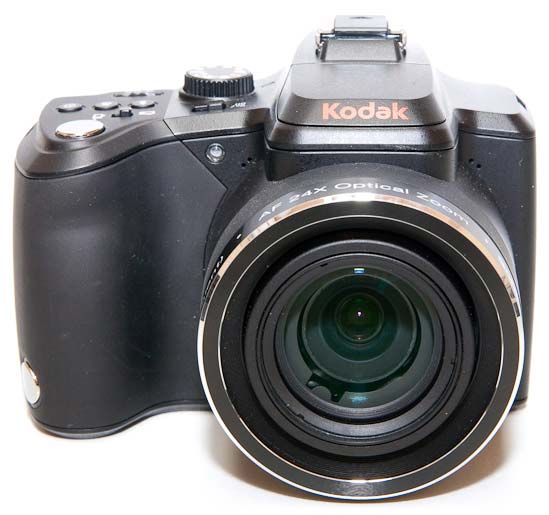 |
| Front of the Camera |
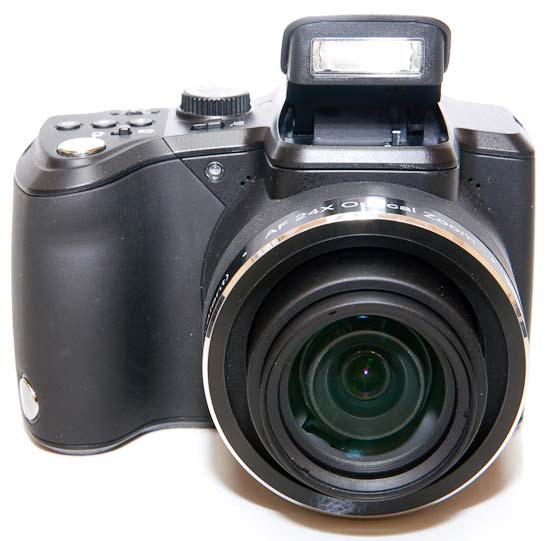 |
| Front of the Camera / Turned On |
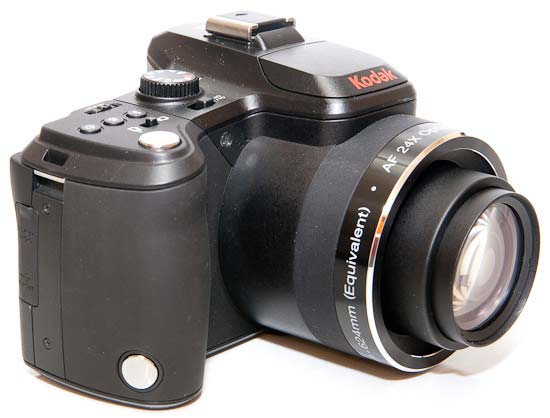 |
| Isometric View |
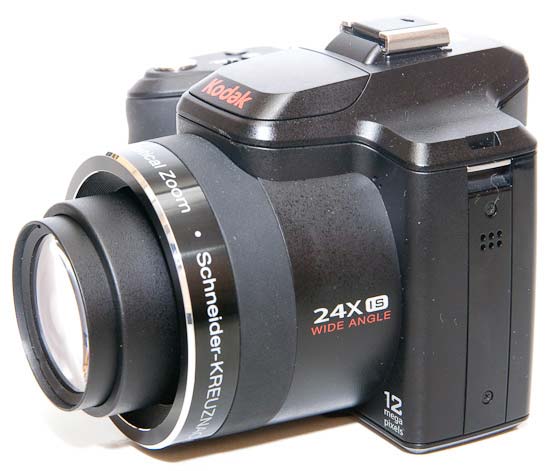 |
| Isometric View |
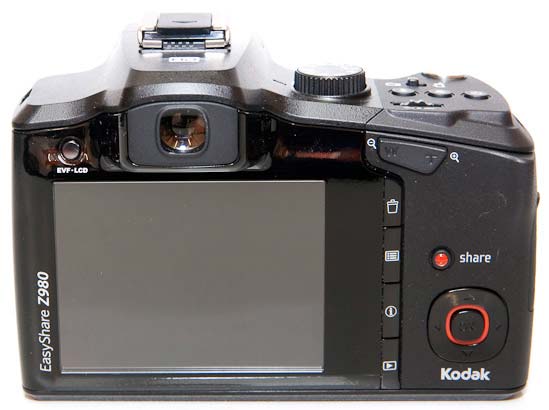 |
| Rear of the Camera |
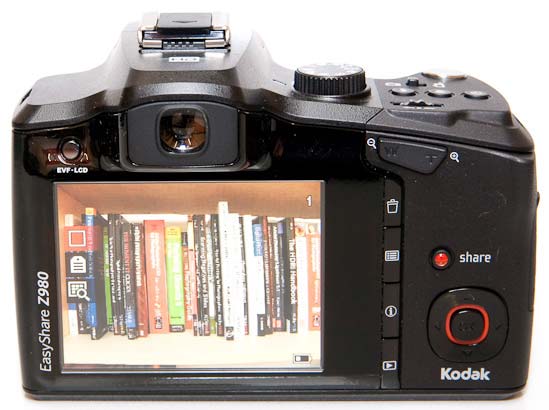 |
| Rear of the Camera / Image Displayed |
 |
| Rear of the Camera / Main Menu |
 |
| Rear of the Camera |
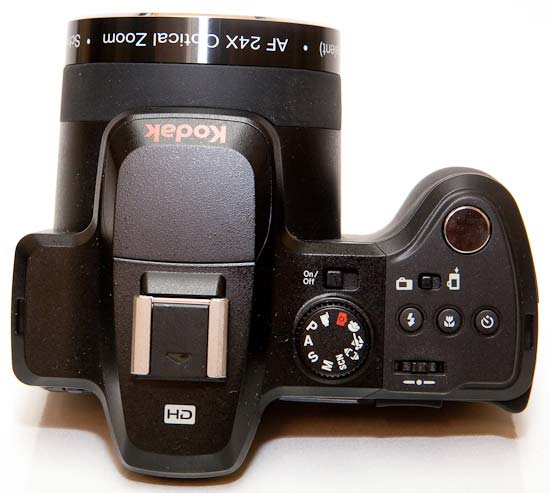 |
| Top of the Camera |
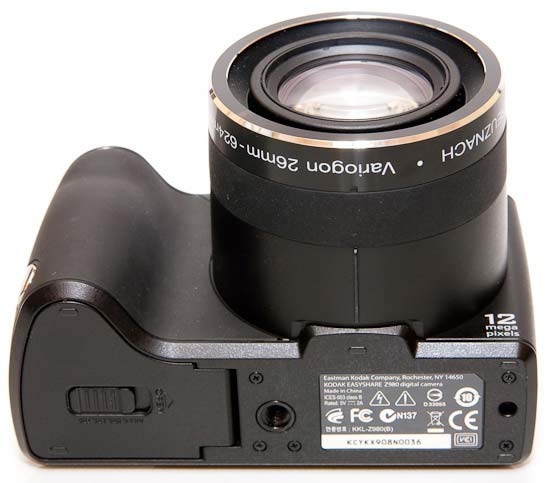 |
| Bottom of the Camera |
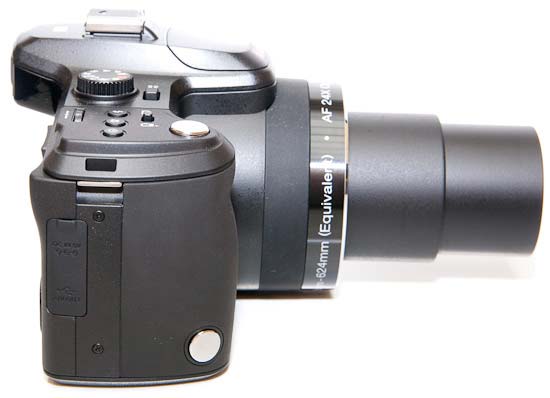 |
| Side of the Camera |
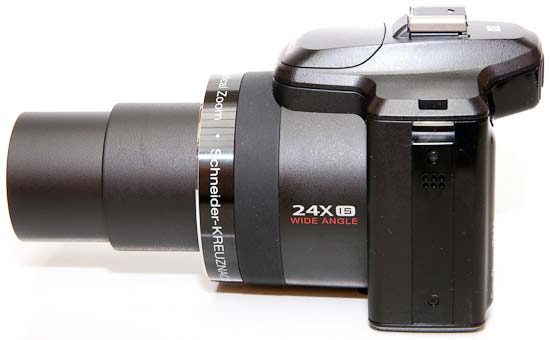 |
| Side of the Camera |
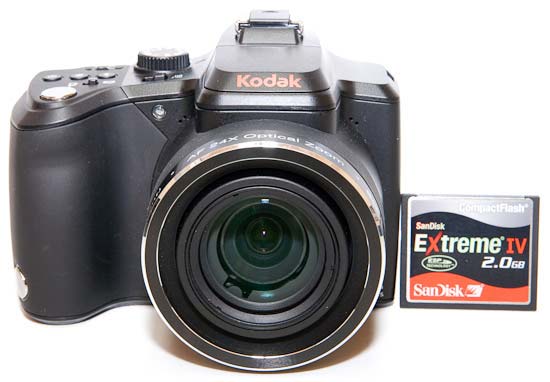 |
| Front of the Camera |
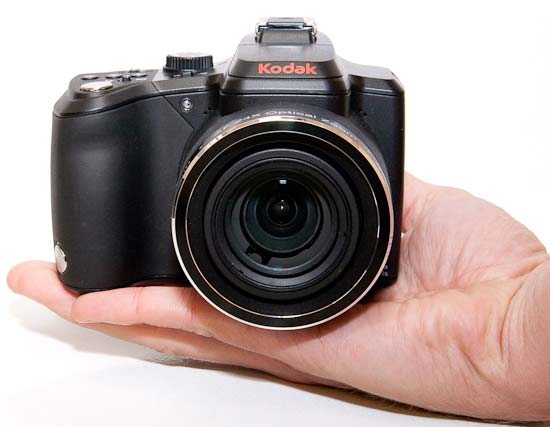 |
| Front of the Camera |
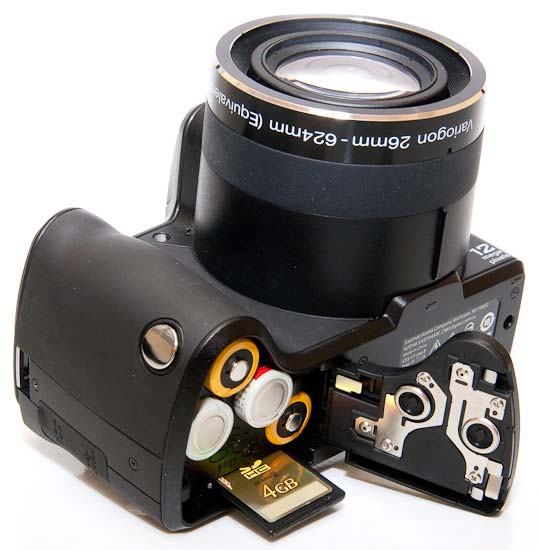 |
| Memory Card Slot |
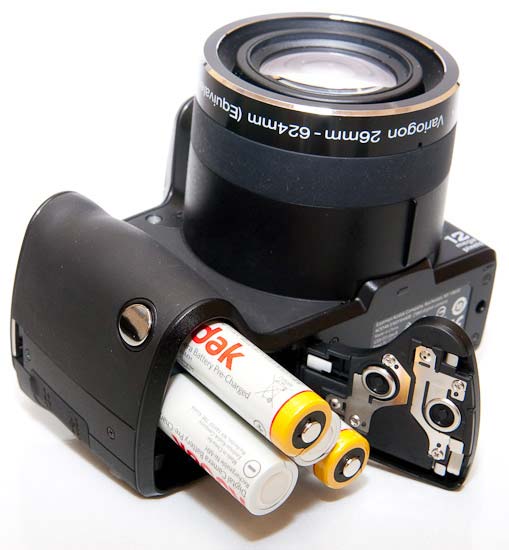 |
| Battery Compartment |
Conclusion
The Kodak EasyShare Z980 super-zoom camera offers a lot on paper, but some serious flaws make it hard to recommend to either beginners or more experienced users alike.
Image quality is at the heart of any camera, but unfortunately it's also at the top of the Z980's list of problems. Noise is evident even at the slowest ISO speed of 64, and it will become apparent even in prints at ISO 400 and faster, limiting the Z980 to hand-held use in good lighting conditions only. It also has a tendency to over-saturate the colours, even in the default Natural Light mode - some people may like this effect, but it certainly isn't accurate. And all of our test photos suffered from an over-aggressive smearing of fine detail. One of the Z980's key features, its RAW mode, couldn't make up for the sub-standard JPEG images, thanks to slow processing times, the inability to record both a RAW and JPEG image at the same time, and the lack of a serious development tool, even the one provided by Kodak in the box. The 24x zoom lens suffers from a general lack of sharpness and obvious barrel distortion at wide-angle settings.
The Kodak EasyShare Z980 also suffers from some rather "curious" design decisions. Adding the supplied vertical grip is promoted as a benefit, but in our view it only makes an already big camera even larger and heavier. The reliance on using a mechanical switch to turn on the second shutter release button (itself a strange inclusion) and the inability to automatically switch the LCD display between portrait and landscape when you do is all rather 1999, rather than 2009. Add a too-small Jog Dial and too-unresponsive zoom button, poor electronic viewfinder and low-resolution LCD screen, and it all adds up to a mish-mash of a user experience that will frustrate the majority of users, both beginners and keen shutterbugs alike.
All of these issues might be forgivable (just) if the price was right, but sadly it isn't. $399 / £379 is only a little bit cheaper than the Z980's main super-zoom rivals - ultimately we'd definitely save the extra cash and shop elsewhere. While the Kodak EasyShare Z980's list of key specifications looks promising, in reality it simply doesn't add up as an overall package.
| Ratings (out of 5) | |
|---|---|
| Design | 3.5 |
| Features | 4.5 |
| Ease-of-use | 3.5 |
| Image quality | 2.5 |
| Value for money | 3 |
Review Roundup
Reviews of the Kodak EasyShare Z980 from around the web.
I've been avoiding this moment for a month. Before I left for Europe, Kodak sent me their latest ultra-zoom camera, the Z980, and I've been carrying it for over 30 days and through five countries. I've taken about two hundred photographs and I've gotten to know this thing fairly well. My initial conclusion? I'm going to say this just to get it over with: I miss my DSLR. Now, read on for a bit of clarification.
Read the full review »
Back in the late '60s I carried a Kodak Instamatic camera with me to drag races at tracks across southern California, snapping photos of cars and drivers in the pits. In 1975 I graduated to a Nikon F2, with Kodak remaining almost exclusively my film of choice. I haven't shot a roll of film in eight or nine years, but another Kodak camera has found its way into my hands, if only for review purposes.
Read the full review »
The latest Super-zoom model from Kodak, the EasyShare Z980 is a power packed digital camera with 12-megapixels, a 24x optical zoom lens, 3.0-inch LCD, 720p HD movie mode, and RAW the JPEG image formats. Kodak designed this camera with all users in mind, whether you are an avid enthusiast or a newbie. For those with less experience, the Z980 provides a wealth of user-friendly exposure modes. These include the fully automatic "Smart Auto", Program AE, and 19 Scene modes. For the more experienced, the Z980 offers Aperture priority, Shutter speed priority, and even a full Manual exposure mode. The Z980 also includes most all of the Kodak EasyShare technologies we have come to know, like Perfect Though, Face Detection, and Image Stabilization.
Read the full review »
Specifications
| Standard features | ||
| Sensor type | 1 / 2.33 type | |
| Effective pixels | 12 MP (4112 × 3032) | |
| Lens | 26–624 mm (35 mm equiv.) f/2.8–5.0 SCHNEIDER-KREUZNACH VARIOGON Lens | |
| Zoom | 24X optical, 5X advanced digital, total zoom range 120X | |
| Image stabilizer | optical | |
| Shutter speed | 1/2–1/2000 sec. (auto) 16–1/2000 sec. (manual) | |
| Monitor | 3 in. type high resolution (201K dots), 5 level brightness adjustments | |
| Storage | 64 MB internal memory* available, SDHC/SD card expansion slot | |
| Auto focus | ||
| Type | TTL imager AF system | |
| Modes | normal, macro, infinity, manual | |
| Focus range | wide standard: 0.7 m–infinity tele standard: 2.5 m–infinity wide macro: 0.1–1.0 m tele macro: 1.7–3.0 m super macro: 0.01–0.3 m | |
| Auto focus control | single, continuous | |
| Auto focus zones | TTL multi-zone, center zone AF, selectable zone AF (25 zones) | |
| Face-priority AF | yes | |
| AF assist light | yes | |
| Exposure control | ||
| ISO sensitivity | Smart Capture mode: auto, 64, 100, 200, 400, 800, 1600 PASM mode: 80, 100, 200, 400, 800, 1600, 3200**, 6400** | |
| Metering modes | multi-pattern, center-weighted, spot | |
| Compensation | ±2.0 EV with 1/3 EV steps | |
| Bracketing | ±1.0 EV with 1/3 EV steps, 3 images | |
| White balance | auto, daylight, tungsten, fluorescent, open shade | |
| Flash | ||
| Range | 6.2 m (@ wide, ISO 400) 3.5 m (@ tele, ISO 400) | |
| Modes | auto, off, fill, red-eye reduction | |
| Compensation | ±1.0 EV in 1/3 steps | |
| Shooting specifications | ||
| Drive modes | single shot, normal burst (1 fps up to 6 frames), fast burst (5 fps up to 9 frames) | |
| Shooting modes | Smart Capture, sport, P (program mode), A (aperture priority mode), S (shutter priority mode), M (manual mode), portrait, panorama (left–right, right–left), video, SCN (scene modes) | |
| Scene modes | high ISO, night portrait, landscape, night landscape, flower, sunset, backlight, candlelight, manner/museum, text, beach, snow, fireworks, children, self-portrait, stage | |
| Click to capture | < 0.2 sec. | |
| Shot to shot | < 1.5 sec | |
| Still capture | ||
| Still format | JPEG/EXIF v2.21, KDC RAW image file format | |
| Picture size | 12.0 MP (4000 × 3000)—4:3 10.7 MP (4000 × 2264)—3:2 9.0 MP (4000 × 2256)—16:9 6.0 MP (2832 × 2128)—4:3 3.1 MP (2048 × 1536)—4:3 2.2 MP (1800 × 1200)—3:2 2.1 MP (1920 × 1080)—16:9 1.2 MP (1280 × 960)—4:3 | |
| Compression level | PASM: fine standard, basic, RAW*** Smart Capture: standard | |
| Color modes | high color, natural color, low color, sepia, black and white | |
| Sharpness | high, normal, low | |
| Review options | single, magnification with navigation box, multi-up, multi-field search, slideshow, multimedia slideshow, histogram, view by | |
| Editing | on-camera crop, KODAK PERFECT TOUCH Technology, voice annotation, RAW*** file development | |
| File management | delete, undo delete, copy, protect, text tagging, one-button upload | |
| Video capture | ||
| Format | H. 264 AAC LC .MOV with stereo sound, QUICKTIME MPEG-4 with stereo sound | |
| Quality | HDV (1280 × 720) at 30 fps VGA (640 × 480) at 30 fps QVGA (320 × 240) at 30 fps | |
| Length | HDV: continuous up to 29 min. based on memory card capacity VGA/QVGA: continuous up to 80 min. based on memory card capacity | |
| Review options | play, rewind, pause, fast-forward and rewind, forward and rewind by frame, multi-up, multimedia slideshow, multi-field search bookmarks | |
| Editing | make a picture from video, action print (1, 4, 9, 16-up), trim | |
| File management | delete, undo delete, copy, protect, text tagging, one-button upload | |
| Customization | ||
| Custom settings | LCD brightness (5 levels), date stamp (on/off), image storage, capture frame grid (on/off), image stabilizer control, red-eye preflash (on/off), quick view (on/off), advanced digital zoom, orientation sensor, sound, volume, date & time, auto power off, video out, language, reset camera | |
| Sharing | ||
| Share button | yes | |
| Physical specifications | ||
| I/O interface | digital (USB 2.0 high speed) connector for data and video | |
| Power | KODAK Ni-MH Pre-Charged Rechargeable / Ni-MH Rechargeable Digital Camera Batteries (4 AA), optional AC adapter | |
| Tripod mount | ¼ in. standard | |
| Dimensions | W × H × D: 3.5 × 4.9 × 4.1 in. (90.5 × 123.7 ×105 mm) | |
| Weight | 14.6 oz (415 g) (without SD card and batteries) | |
| Compatibility | ||
| Direct printing | PictBridge-enabled | |
| Software | works with KODAK EASYSHARE Software | |
| Warranty | one year | |
Your Comments
- Introduction
- Ease of Use
- Image Quality
- Sample Images
- Product Images
- Conclusion
- Review Roundup
- Specifications
Source: https://www.photographyblog.com/reviews/kodak_easyshare_z980_review
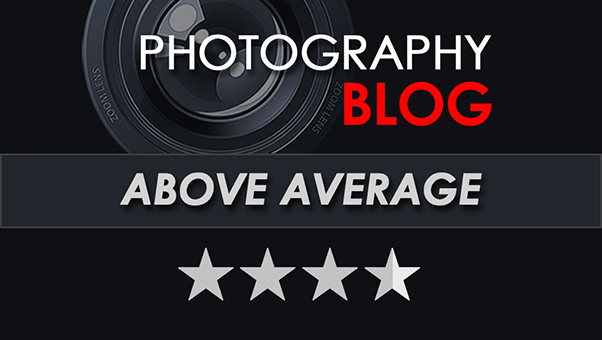
0 Response to "How Do I Shut Off the Af and Ae on My Kodak Easy Share Z980"
Post a Comment